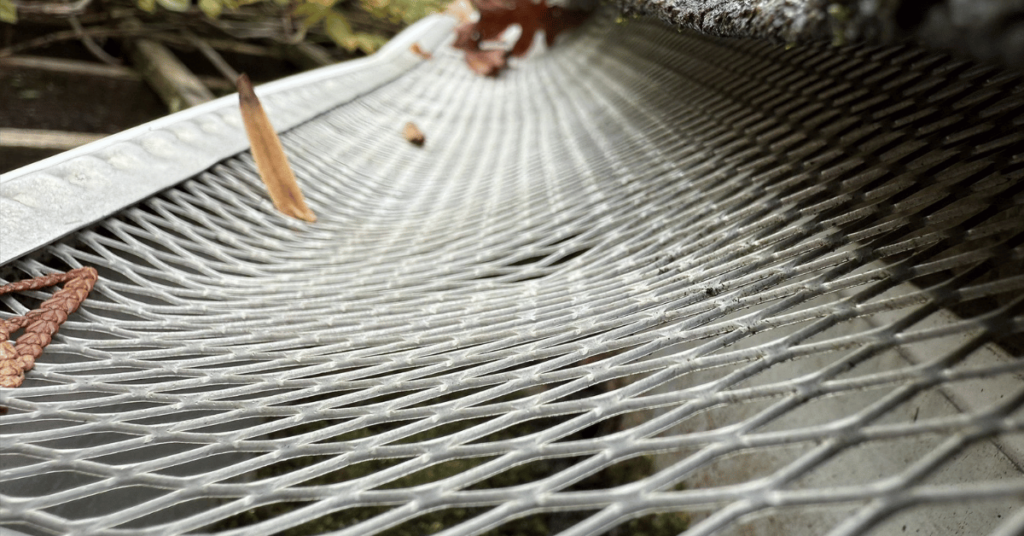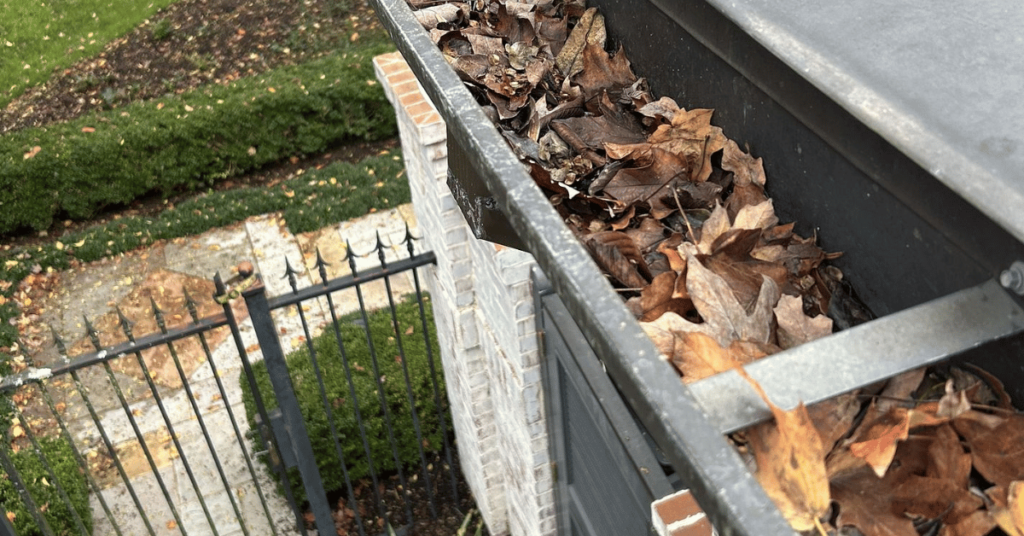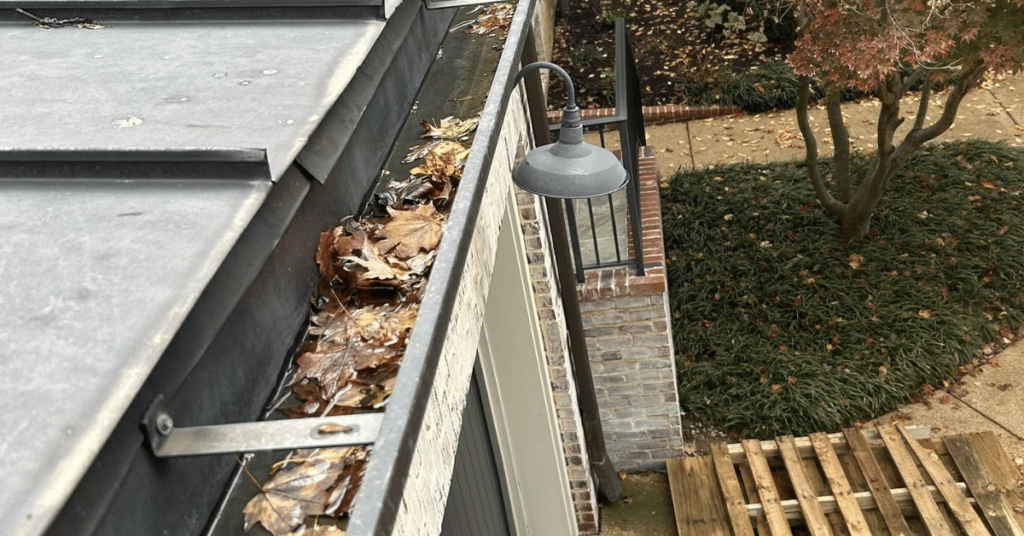Gutter Cleaning Tips
Highlights for Gutter Cleaning
Keeping your gutters clean is one of the simplest and most effective ways to protect your home from water damage. Clogged gutters can cause serious problems, from leaks to foundation issues. This guide is here to help you take charge of your gutter care with straightforward DIY cleaning tips, practical advice for roof maintenance, and easy ways to keep your home in good shape. Whether you’re a first-timer or need a refresher, these tips will save you time, money, and hassle.

Safety First: Preparing for Gutter Cleaning
Gutter cleaning can be risky if you don’t take the proper precautions. Always use sturdy tools to keep everything steady, including a reliable extendable ladder and stabilizer. Heavy-duty gloves, safety goggles, and non-slip shoes are must-haves to protect yourself. For example, a ladder stabilizer is a great investment because it keeps the ladder from resting directly on your gutters, preventing dents or damage.
Before climbing up, make sure the ladder is set on even ground and that someone is nearby to help if needed. Be cautious of overhead power lines near your roof, as they pose an electrical hazard. Check the weather forecast, too—dry, calm days are best for working outdoors. With the right preparation, you’ll feel confident and safe while tackling your gutters.

Essential Tools for Gutter Cleaning
The right tools make a big difference in how quickly and efficiently you can clean your gutters. Essential tools like a gutter scoop or garden trowel are great for removing debris, while a bucket and tarp can help you manage waste without making a mess. For instance, a gutter scoop is shaped to fit gutters perfectly, making clearing leaves and dirt easy.
For more advanced cleaning, a garden hose with a spray nozzle or a power washer can help flush out stubborn debris. A plumber’s snake is another handy tool for clearing clogs in downspouts. If you’re tired of frequent cleanings, consider installing gutter guards. Mesh guards, for example, keep out larger debris while allowing water to flow through, reducing the need for maintenance.

Step-by-Step Guide to Cleaning Gutters
Clearing Debris by Hand
Start near the downspout, as debris builds up there the most often. Place the debris into your bucket using a gutter scoop to remove leaves, sticks, and dirt. Work along the gutter, clearing everything to ensure water can flow freely. This prevents overflows that can damage your roof or fascia boards.
Flushing the Gutters
Once the debris is cleared, use a garden hose with a spray nozzle to rinse out the gutters. Start at the opposite end of the downspout to push any remaining debris toward it. This step helps reveal leaks or areas where water doesn’t flow correctly, allowing you to address those issues immediately.
Dealing with Downspout Blockages
A plumber’s snake can help break up blockages if water doesn’t drain through the downspout. Insert it into the downspout and rotate gently to loosen the debris. Rinse again with the hose to confirm the clog is gone, ensuring your system is fully functional.

Inspecting and Maintaining Your Gutter System
Cleaning your gutters is a great time to check for damage. Look for rust, cracks, or sagging sections that can lead to leaks and water damage. If you spot rust spots, applying a waterproof sealant can extend the life of the gutter.
Examine the fascia boards, soffits, and roof valleys near the gutters for signs of wear or water damage. Peeling paint or softwood can indicate water overflow issues. Seasonal cleaning, such as in the spring and fall, helps keep everything in good condition. If you live in an area with heavy rain or snow, consider cleaning more often to prevent buildup.

Additional Gutter Maintenance Tips
Trimming Overhanging Trees
Trees that hang over your roof are a significant source of gutter debris. Regularly trimming these branches can significantly reduce the leaves and twigs in your gutters. For example, keeping a 10-foot clearance between trees and your home can make a big difference.
Managing Drainage Around the Home
Downspouts should direct water at least six feet away from your foundation. If necessary, use extenders or splash blocks to guide water further. Proper landscaping, such as grading your yard to slope away from the house, can also help prevent water from pooling around your foundation.
Scheduling Professional Inspections
Even with regular DIY care, having a professional inspect your gutters and roof once a year is a good idea. Professionals can spot subtle problems like loose roof flashing or hidden leaks that you might miss.

Frequently Asked Questions
- How often should I clean my gutters?
Spring and fall are the most common times twice a year, but more often if you live in a wooded area or a region with heavy rainfall. - Are gutter guards worth it?
Yes, primarily if you deal with a lot of debris. They can save time and reduce how often you need to clean your gutters. - Can clogged gutters damage my home?
Absolutely. Overflowing water can lead to roof leaks, foundation issues, and even mold growth inside your home.
Conclusion
Caring for your gutters is a simple yet crucial part of maintaining your home. Clean, well-functioning gutters protect your roof, foundation, and walls from costly water damage. Following these DIY tips can save money and avoid bigger problems. Invest in the right tools, like a gutter scoop or plumber’s snake, and consider gutter guards for long-term ease.
Seasonal cleaning and inspections, combined with preventive care like trimming overhanging trees and ensuring proper drainage, keep your home safe and sound. With a little effort, you can maintain your gutters and enjoy peace of mind knowing your home is protected.
Parks
Matt is Five Points Roofing's VP of Business Development, directly in charge of company growth and building a true contracting brand that is trusted by millions of homeowners. It’s not all business for Matt though, being 6’5”, he’s an avid amateur beach volleyball player and golfer. Competition is his thing. Happily married to his wife Laura, they also have a giant 72 pound ex-racing greyhound that’ll run laps around you.
Roof University is the place if you're a roofer, property owner, or insurance adjuster.
